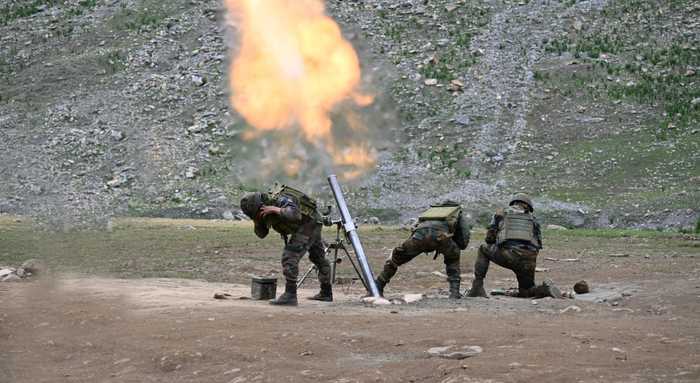Published 15:29 IST, September 3rd 2024
Indian Army Establishing New Firing Ranges to Strengthen Battle Readiness at the LAC
The Indian Army is intensifying efforts to enhance operational readiness along the Line of Actual Control to counter the Chinese threat.
- Defence
- 4 min read
New Delhi, India- The Indian Army is intensifying its preparations to ensure its forces remain battle-ready along the Line of Actual Control (LAC) with China by expanding and acquiring new firing ranges in key forward areas, including the strategically important north-eastern region. This move comes amid heightened tensions along the LAC, where the Indian Army is focusing on bolstering its defensive capabilities to counter potential threats from the Chinese People's Liberation Army (PLA).
These new ranges are essential for providing the Army with adequate training facilities, particularly in high-altitude regions where the terrain and weather conditions are challenging. The expansion is a crucial step in maintaining the Army's operational effectiveness and readiness in the face of ongoing border disputes with China.
Strategic Land Acquisitions in Arunachal Pradesh
In a significant development last year, the Arunachal Pradesh government agreed to transfer parcels of land at Mandala and Kamrala to the Indian Army for the construction of new firing ranges. These locations, situated near Yangtse in Tawang at an altitude of 10,000 feet, were the site of the December 9, 2022, face-off between Indian and Chinese forces. The decision to establish firing ranges in these areas underscores the strategic importance of maintaining a robust military presence along the sensitive border regions.

The expansion of firing ranges is not limited to the northeast. The Indian Army currently operates 24 notified firing ranges across the country, with six located in the conflict-prone regions of Jammu Kashmir and Ladakh. These ranges are crucial for the Army to conduct regular training exercises, ensuring that its troops are well-prepared to handle any eventuality along the volatile borders with both China and Pakistan.
In addition to expanding its presence in forward areas, the Indian Army has decided to relocate its firing range in Ayodhya. The decision was made in light of the upcoming construction of a new airport in the area, which will be built after the consecration of the Ram Lalla idol at the Ram Temple. The current firing range falls within the flight path of the new airport, making it unsafe for continued use. Army sources have confirmed that the search for a suitable alternative location is ongoing.
Persistent Threats from China's PLA
The expansion of firing ranges along the LAC is a direct response to the persistent and aggressive actions of the Chinese PLA. The PLA has been notorious for violating and transgressing the LAC, leading to frequent skirmishes and standoffs. One of the most alarming incidents occurred in January 2022 when the PLA abducted a 17-year-old boy, Miram Taron, from Arunachal Pradesh's Upper Siang district. Taron was subjected to torture, including electric shocks, before being released after nine days. Such incidents have only reinforced the need for India to strengthen its border defence infrastructure and ensure that its forces are fully prepared to respond to any provocations.

While the Army continues to operate its existing ranges, it faces challenges in retaining some of them due to developmental pressures. For instance, the Netarhat field firing range has remained unused since 1993 due to its remote location. As India continues to develop its infrastructure, the Army must balance the need for military preparedness with the demands of civilian development.
Army Embraces Green Initiatives
In addition to its focus on enhancing military capabilities, the Indian Army is also taking significant steps towards environmental sustainability. The army is spearheading initiatives to incorporate green fuels and green building norms as part of the government's broader goal to achieve carbon neutrality. These initiatives include the introduction of electric and green hydrogen-operated buses and cars within the Army, with plans to establish a green hydrogen plant in collaboration with NTPC at Chushul in Ladakh. This plant will not only power the military garrison but also fuel green hydrogen buses in Leh.
"We are working towards transitioning to Ethanol 20 and BS VI while ensuring our vehicles are ready to traverse rough terrain in adverse weather conditions," a senior Army officer stated. The officer emphasized that the data and experience gained from operating green fuels would inform future research and development efforts to adopt the latest fuel technologies for military trucks and combat vehicles.
Moreover, the Army has already set up 68 solar projects, including at the Siachen Base Camp, the world's highest battlefield. The upcoming Thal Sena Bhawan, a GRIHA 4 plus certified building, will incorporate green norms, further highlighting the Army's dedication to reducing its carbon footprint.
Updated 15:29 IST, September 3rd 2024